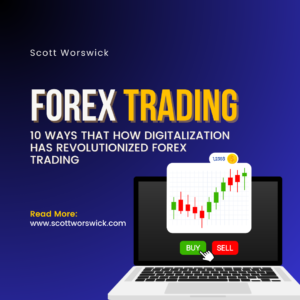Venturing into the journey of mastering forex trading is akin to stepping into a dynamic arena where fortunes are won and lost in the blink of an eye. In this exhilarating world of currency exchange, developing a well-crafted trading strategy is the compass that guides traders through the complexities of the market. With the potential for lucrative gains juxtaposed against the risks of financial loss, navigating the terrain of forex trading demands a strategic approach that balances opportunity with caution. In this introductory exploration, we delve into the essential tips and strategies that pave the path to success in the realm of forex trading.
Understanding the nuances of forex trading is fundamental to crafting a successful trading strategy that withstands the test of time. The forex market, often referred to as the largest and most liquid financial market in the world, operates around the clock, spanning continents and time zones. Driven by a myriad of factors including economic indicators, geopolitical events, and market sentiment, forex trading offers unparalleled opportunities for profit, but also presents unique challenges that require careful navigation. By gaining a comprehensive understanding of market dynamics, traders can make informed decisions, anticipate price movements, and develop strategies that capitalize on emerging trends.
Moreover, defining clear trading goals serves as the cornerstone of a successful forex trading strategy. Whether the objective is to generate consistent income, achieve financial independence, or simply hone trading skills, establishing clear and achievable goals provides direction and purpose to the trading journey. By aligning trading goals with individual risk tolerance, time commitment, and financial objectives, traders can create a roadmap that guides their decisions and actions in the dynamic and ever-changing landscape of forex trading.
Table of Contents
1. Understand Market Dynamics

In the realm of forex trading, comprehending market dynamics is akin to deciphering the intricate dance of supply and demand on a global scale. The forex market, often described as the heartbeat of the global economy, operates 24 hours a day, five days a week, spanning continents and time zones. It is driven by a myriad of factors including economic indicators, geopolitical events, central bank policies, and market sentiment. Traders must grasp the interconnectedness of these elements and their influence on currency exchange rates to navigate the ebb and flow of forex trading successfully.
Mastering market dynamics entails not only analyzing economic data releases and geopolitical developments but also interpreting market sentiment and investor behavior. The interplay between fundamental analysis, which examines economic factors and their impact on currency values, and technical analysis, which focuses on price patterns and market trends, forms the foundation of effective market analysis in forex trading. By synthesizing these analytical approaches, traders can gain insights into potential market movements and identify strategic entry and exit points with greater precision and confidence.
Moreover, staying attuned to broader market trends and correlations is essential for informed decision-making in forex trading. Understanding how various asset classes, such as stocks, bonds, commodities, and currencies, interact with each other can provide valuable context for interpreting price movements and anticipating market shifts. By cultivating a holistic understanding of market dynamics, traders can position themselves strategically to capitalize on opportunities and mitigate risks in the ever-evolving landscape of forex trading.
2. Define Your Trading Goals in Forex Trading
Before embarking on the journey of forex trading, it’s crucial to articulate clear and achievable trading goals that serve as guiding beacons amidst the complexities of the market. These goals act as the north star, directing your decisions and actions, and ultimately shaping the trajectory of your trading journey. Whether your objective is to generate supplemental income, achieve financial independence, or simply hone your trading skills, defining your goals lays the foundation for a successful and fulfilling experience in forex trading.
Effective goal-setting in forex trading involves striking a delicate balance between ambition and realism. While it’s natural to aspire for lofty financial gains, setting unrealistic expectations can lead to disappointment and frustration. Therefore, it’s essential to set goals that are both challenging and attainable, taking into account factors such as your level of experience, risk tolerance, and financial resources. By establishing clear and measurable objectives, you can chart a course that aligns with your aspirations and empowers you to make informed decisions in the dynamic landscape of forex trading.
Moreover, defining your trading goals provides a sense of purpose and direction, instilling discipline and focus in your approach to forex trading. With well-defined goals in place, you can filter out distractions and prioritize activities that contribute to your overarching objectives. Whether it’s conducting market research, refining your trading strategy, or honing your risk management skills, every action you take in forex trading becomes a deliberate step towards realizing your goals. By cultivating a mindset of purpose-driven trading, you can navigate the highs and lows of the market with resilience and determination, ultimately paving the way for long-term success in forex trading.
3. Choose Your Trading Style
In the multifaceted realm of forex trading, selecting the most suitable trading style is akin to finding the perfect rhythm in a symphony. From the adrenaline-fueled pace of day trading to the patient deliberation of position trading, there exists a spectrum of trading styles, each with its own unique characteristics and appeal. Deciding on the optimal trading style requires careful consideration of factors such as your personality, lifestyle, risk tolerance, and time commitment. By aligning your trading style with these key parameters, you can harness your strengths and preferences to navigate the complexities of forex trading with confidence and precision.
Day trading, characterized by rapid-fire decision-making and short-term trading positions, appeals to those who thrive in fast-paced environments and possess the ability to react swiftly to market fluctuations. This style of forex trading requires keen analytical skills, discipline, and a high tolerance for risk, as traders aim to capitalize on intraday price movements to generate profits. Conversely, swing trading offers a more relaxed approach, with traders seeking to profit from medium-term price trends over a period of days to weeks. Swing traders employ technical analysis techniques to identify entry and exit points, allowing them to ride the waves of market momentum while mitigating short-term volatility.
For those with a long-term perspective and a penchant for patience, position trading may hold particular allure. Position traders adopt a “buy and hold” strategy, taking positions based on macroeconomic trends and fundamental analysis. While position trading requires less time and attention compared to other trading styles, it demands a deep understanding of global economic dynamics and the ability to withstand prolonged market fluctuations. By carefully evaluating the pros and cons of each trading style and considering your individual preferences and circumstances, you can tailor your approach to forex trading to maximize your potential for success and fulfillment in the dynamic world of financial markets.
4. Conduct Thorough Market Analysis
In the intricate tapestry of forex trading, conducting comprehensive market analysis is akin to navigating a labyrinth with a map in hand. It’s not merely about predicting the direction of currency pairs but about understanding the underlying forces that drive price movements. Fundamental analysis delves into economic indicators, monetary policies, geopolitical events, and other macroeconomic factors to assess the intrinsic value of currencies. By scrutinizing economic data releases such as GDP growth, inflation rates, and employment figures, forex traders can gauge the health of economies and anticipate shifts in currency valuations with greater accuracy.
On the technical front, forex traders employ a myriad of tools and techniques to decipher price charts and identify potential trading opportunities. Technical analysis involves analyzing historical price data, chart patterns, and indicators such as moving averages, oscillators, and Fibonacci retracements to discern market trends and patterns. By recognizing recurring price patterns and key support and resistance levels, traders can make informed decisions about when to enter or exit trades, thereby enhancing their chances of success in the dynamic arena of forex trading.
Moreover, sentiment analysis offers valuable insights into market psychology and investor sentiment, providing a glimpse into the collective mindset of market participants. By monitoring sentiment indicators such as positioning data, market surveys, and news sentiment, forex traders can gauge the prevailing mood in the market and anticipate potential shifts in sentiment that may impact currency prices. By integrating fundamental, technical, and sentiment analysis into their trading strategies, forex traders can gain a comprehensive understanding of market dynamics and make more informed decisions, ultimately enhancing their prospects for success in the dynamic and ever-evolving world of forex trading.
5. Develop a Robust Risk Management Strategy

In the high-stakes arena of forex trading, crafting a robust risk management strategy is akin to fortifying the foundations of a skyscraper. It’s not just about maximizing potential profits but also about safeguarding capital against the inherent uncertainties of the market. Central to effective risk management in forex trading is determining the optimal position size for each trade. By carefully calibrating the size of their positions relative to their account size and risk tolerance, traders can minimize the impact of adverse market movements on their capital and preserve their trading funds for future opportunities.
Implementing stop-loss orders is another essential component of a sound risk management strategy in forex trading. These predetermined exit points serve as a safety net, automatically closing out trades at predefined price levels to limit potential losses. By setting stop-loss orders based on technical indicators, support and resistance levels, or volatility measures, traders can protect their capital from catastrophic losses and maintain discipline in their trading approach. Additionally, trailing stop-loss orders can be used to lock in profits as a trade moves in the trader’s favor, thereby mitigating the risk of giving back gains in volatile market conditions.
Diversification is a fundamental principle of risk management that applies equally to forex trading. By spreading their trading capital across multiple currency pairs, asset classes, and trading strategies, traders can reduce the concentration risk associated with any single trade or market segment. Diversification allows traders to hedge against adverse market movements in one asset class while capitalizing on opportunities in others, thereby smoothing out their overall portfolio returns and enhancing the resilience of their trading strategy. Moreover, diversification enables traders to adapt to changing market conditions and mitigate the impact of unforeseen events on their forex trading performance.
Furthermore, maintaining a healthy risk-to-reward ratio is essential for long-term success in forex trading. By seeking out trades with favorable risk-to-reward ratios, where the potential reward outweighs the potential risk, traders can tilt the odds in their favor and increase their chances of profitability over time. A disciplined approach to risk management involves adhering to predetermined risk-reward ratios for each trade, ensuring that potential profits justify the associated risks. By focusing on trades that offer attractive risk-to-reward profiles and avoiding those with unfavorable risk-reward ratios, traders can optimize their risk-adjusted returns and cultivate a sustainable approach to forex trading.
6. Test and Refine Your Strategy
In the dynamic world of forex trading, testing and refining your trading strategy is akin to honing a finely crafted instrument, fine-tuning its performance for optimal results. Before deploying your strategy in live trading, it’s essential to subject it to rigorous testing using historical data. Backtesting allows traders to simulate their strategy over past market conditions, assessing its effectiveness and identifying potential areas for improvement. By analyzing the results of backtesting, traders can gain valuable insights into the performance of their strategy, including its profitability, drawdowns, and win-loss ratio, and make informed decisions about its viability in real-world trading.
However, backtesting alone is not sufficient to validate the robustness of a forex trading strategy. Forward testing, also known as paper trading, involves executing simulated trades in real-time market conditions without risking actual capital. This hands-on approach allows traders to evaluate how their strategy performs in live trading environments, including factors such as slippage, order execution speed, and market liquidity. By monitoring the performance of their strategy in real-time and comparing it to backtesting results, traders can gain a deeper understanding of its strengths and weaknesses and make necessary adjustments to enhance its performance.
Moreover, ongoing monitoring and refinement are essential aspects of developing a successful forex trading strategy. The forex market is dynamic and ever-changing, influenced by a myriad of factors ranging from economic data releases to geopolitical developments. As market conditions evolve, traders must adapt their strategies accordingly to maintain their edge in the market. This iterative process of refinement involves analyzing trading performance, identifying patterns and trends, and making adjustments to trading parameters or risk management rules as needed. By continuously refining their strategies based on market feedback, traders can stay ahead of the curve and position themselves for success in the fast-paced world of forex trading.
Furthermore, seeking feedback and insights from other traders can provide valuable perspectives and enhance the effectiveness of your forex trading strategy. Engaging with trading communities, participating in forums or social media groups, and attending trading workshops or seminars are excellent ways to connect with fellow traders and exchange ideas. By sharing experiences, strategies, and best practices with peers, traders can gain fresh insights into their own trading approach and uncover new opportunities for improvement. Collaborative learning fosters a culture of continuous improvement and innovation, empowering traders to refine their strategies and achieve greater success in forex trading.
7. Embrace Discipline and Patience
In the fast-paced world of forex trading, cultivating discipline and patience is akin to mastering the art of sailing in turbulent waters. Discipline is the cornerstone of successful trading, encompassing the ability to adhere to a well-defined trading plan, follow established rules, and resist the temptation of impulsive decision-making. It requires unwavering commitment to your trading strategy, even in the face of adversity or short-term setbacks. By maintaining discipline in your approach to forex trading, you can avoid succumbing to emotional impulses and make rational, objective decisions based on sound analysis and risk management principles.
Moreover, patience is a virtue that separates successful traders from the rest, allowing them to withstand the inevitable ups and downs of the market with equanimity. Patience entails waiting for high-probability trading opportunities to materialize, rather than forcing trades out of FOMO (fear of missing out) or succumbing to the allure of quick profits. It involves staying calm and composed during periods of market volatility or consolidation, trusting in your trading strategy and having the conviction to let winning trades run while cutting losses short. By embracing patience in forex trading, you can cultivate a long-term mindset and avoid the pitfalls of short-term thinking, ultimately positioning yourself for sustained success in the market.
Furthermore, discipline and patience go hand in hand, reinforcing each other to form the bedrock of a resilient trading mindset. Discipline enables you to adhere to your trading plan and execute trades with precision, while patience empowers you to stay the course and remain focused on your long-term goals. Together, they provide the mental fortitude needed to navigate the complexities of forex trading with confidence and resilience. By embracing discipline and patience as guiding principles in your trading journey, you can weather the storms of uncertainty and volatility, stay grounded in your approach, and ultimately achieve success in the dynamic and ever-evolving world of forex trading.
8. Stay Informed and Adaptive
In the fast-paced and ever-changing landscape of forex trading, staying informed is akin to equipping oneself with a compass to navigate through uncharted waters. Forex traders must remain vigilant, constantly monitoring global economic developments, geopolitical events, and market news that can influence currency movements. By staying abreast of market trends and staying informed about key drivers of price action, traders can make informed decisions and adapt their strategies accordingly to capitalize on emerging opportunities and mitigate risks.
Moreover, adaptability is a key trait that distinguishes successful forex traders from the rest. Market conditions can change rapidly, and strategies that were effective in one market environment may not yield the same results in another. Therefore, traders must be willing to adapt their approach to suit evolving market dynamics. This may involve adjusting trading parameters, revising risk management strategies, or even adopting entirely new trading techniques. By remaining flexible and open-minded, traders can stay ahead of the curve and maintain a competitive edge in the dynamic world of forex trading.
Furthermore, leveraging technology can enhance traders’ ability to stay informed and adaptive in their forex trading endeavors. Advanced trading platforms, algorithmic trading systems, and analytical tools provide valuable insights into market trends, allowing traders to identify patterns, test hypotheses, and make data-driven decisions. By harnessing the power of technology, traders can streamline their trading process, optimize their strategies, and react swiftly to changing market conditions. However, it’s essential to strike a balance between technology and human intuition, as ultimately, successful forex trading requires a combination of informed analysis, strategic thinking, and emotional intelligence.
9. Leverage Technology Wisely
In the modern landscape of forex trading, technology serves as a powerful ally, providing traders with access to a wealth of tools and resources to enhance their trading strategies. Advanced trading platforms offer intuitive interfaces and robust features that facilitate seamless execution of trades, real-time market analysis, and customizable charting capabilities. By leveraging technology, traders can gain a competitive edge, execute trades with precision, and stay ahead of market trends in the fast-paced world of forex trading.
Algorithmic trading systems, also known as forex robots or expert advisors, automate the process of trade execution based on pre-defined rules and algorithms. These sophisticated software programs can analyze market data, identify trading opportunities, and execute trades with lightning speed and accuracy. By harnessing the power of algorithmic trading, traders can eliminate human emotions from the trading process, minimize the impact of psychological biases, and capitalize on market inefficiencies with unparalleled efficiency and consistency.
Furthermore, analytical tools such as technical indicators, charting software, and trading algorithms empower traders to conduct in-depth market analysis and make informed decisions. Whether it’s identifying trend reversals, detecting support and resistance levels, or gauging market volatility, these tools provide valuable insights into market dynamics and help traders anticipate price movements with greater accuracy. By leveraging analytical tools, traders can refine their trading strategies, optimize entry and exit points, and maximize their potential for success in forex trading.
However, while technology offers numerous benefits to forex traders, it’s essential to exercise caution and discretion in its use. Over-reliance on automated trading systems or excessive use of complex indicators can lead to analysis paralysis and detract from the trader’s intuition and decision-making capabilities. Moreover, technological glitches or system failures can occur, leading to potential losses if traders are not prepared to react swiftly and effectively. Therefore, it’s important for traders to strike a balance between leveraging technology for its advantages while maintaining a keen sense of awareness and control over their trading activities in the dynamic and ever-evolving world of forex trading.
10. Continuously Educate Yourself
In the dynamic realm of forex trading, where market conditions are constantly evolving, the pursuit of knowledge is essential for staying ahead of the curve. Continuously educating yourself about forex trading not only enhances your understanding of market dynamics but also sharpens your analytical skills and decision-making abilities. Whether it’s studying technical analysis techniques, delving into fundamental economic principles, or exploring new trading strategies, ongoing education equips traders with the tools and insights needed to navigate the complexities of the forex market with confidence and precision.
One of the most effective ways to expand your knowledge and skills in forex trading is through self-study and research. There is a wealth of educational resources available, including books, articles, online courses, webinars, and video tutorials, covering a wide range of topics related to forex trading. By immersing yourself in these materials and absorbing information from reputable sources, you can deepen your understanding of market fundamentals, refine your trading techniques, and stay abreast of the latest trends and developments in the industry.
Additionally, seeking mentorship and guidance from experienced traders can provide invaluable insights and accelerate your learning curve in forex trading. Connecting with seasoned professionals who have successfully navigated the ups and downs of the market can offer practical advice, personalized feedback, and real-world perspectives that you may not find in textbooks or online resources. By cultivating relationships with mentors and learning from their experiences, you can avoid common pitfalls, gain valuable insights into effective trading strategies, and fast-track your progress towards achieving success in forex trading.
Furthermore, participating in trading communities, forums, and social media groups can foster a sense of camaraderie and collaboration among forex traders. Engaging with peers, sharing experiences, and exchanging ideas can spark new insights, challenge existing assumptions, and stimulate innovation in your trading approach. By actively participating in discussions, asking questions, and contributing to the collective knowledge base of the community, you can enhance your understanding of forex trading, forge valuable connections, and establish a support network to lean on during challenging times. Ultimately, the journey of continuous education in forex trading is not just about acquiring knowledge but also about embracing a mindset of growth, adaptability, and lifelong learning that empowers you to thrive in the dynamic and ever-changing landscape of the market.
Conclusion
In the intricate world of financial markets, mastering the art of forex trading requires a multifaceted approach that combines knowledge, skill, discipline, and adaptability. By developing a well-defined trading strategy tailored to your goals, risk tolerance, and trading style, you can navigate the complexities of the forex market with confidence and precision. Understanding market dynamics, conducting thorough analysis, and embracing robust risk management principles are essential pillars of success in forex trading, providing a solid foundation upon which to build your trading strategy.
Moreover, the importance of discipline and patience cannot be overstated in the pursuit of success in forex trading. By adhering to your trading plan, maintaining emotional balance, and exercising patience in waiting for high-probability trading opportunities, you can avoid impulsive decisions and stay focused on your long-term objectives. Additionally, staying informed about market developments, leveraging technology wisely, and continuously educating yourself are key ingredients for staying ahead of the curve and adapting to evolving market conditions in forex trading.
In conclusion, developing a successful forex trading strategy is not a destination but a journey of continuous learning, adaptation, and refinement. By cultivating a mindset of growth, resilience, and discipline, you can overcome challenges, capitalize on opportunities, and achieve your financial goals in the dynamic and ever-changing world of forex trading. Remember, success in forex trading is not guaranteed, but with diligence, perseverance, and a commitment to continuous improvement, it is well within reach.





Pingback: The Blueprint to Building a 7-Figure Business: Delve into the fundamental steps and strategies entrepreneurs can follow to build a scalable and profitable business that generates a seven-figure income -